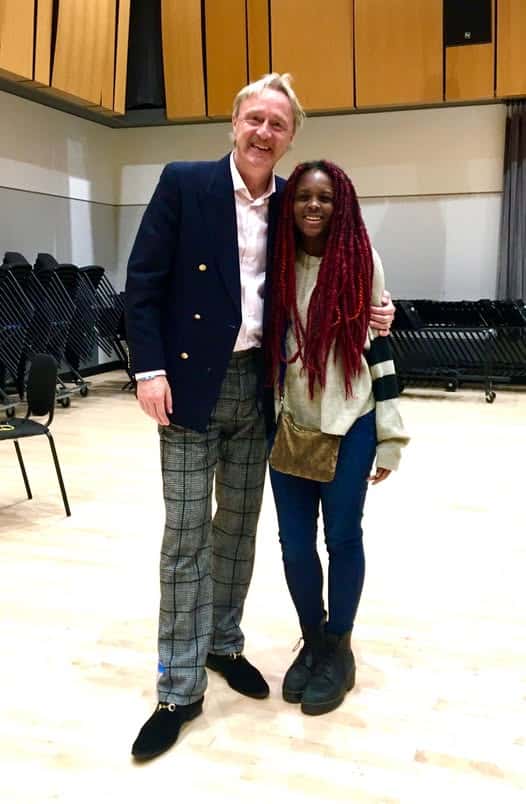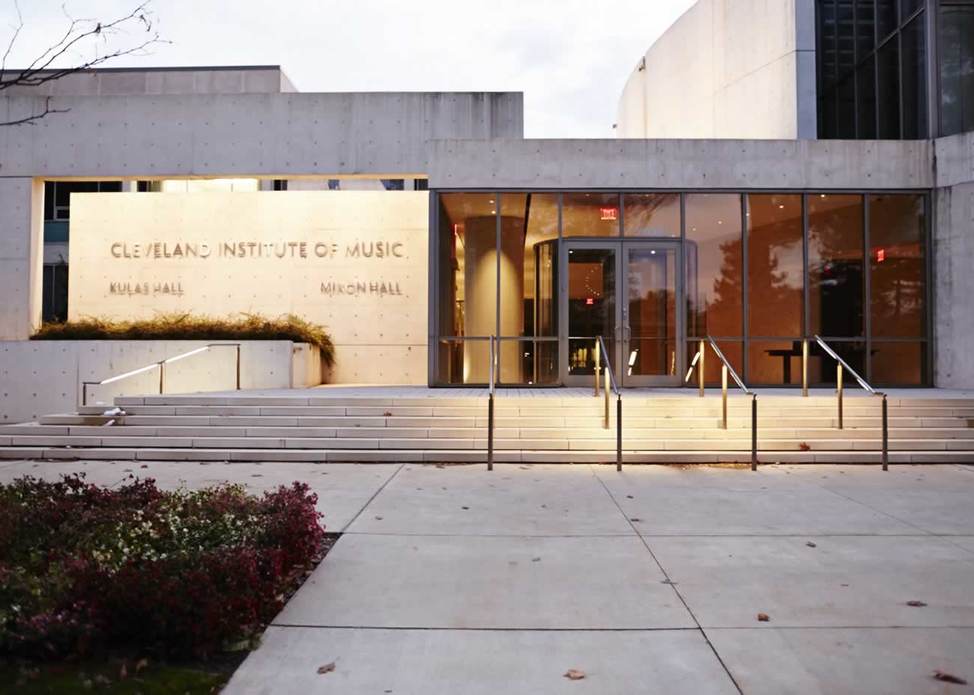The meanest US state for arts funding is…
main… Georgia, which gives less per citizen to arts than any other state.
Georgia allows 6 cents per head. South Carolina gives 63 cents, Mississippi gives 61c., Alabama gives 82c. and Tennessee gives $1.07.
Shame on Georgia.
Watch here.






As a musician originally from NY who now resides in Georgia, can attest for the serious decline in the arts. Appreciation for undeniable facts about how arts education empowers all learning is currently drowned out by education mandates and massive increases of standardized testing.
While teaching violin and viola students, many are overwhelmed by the sheer amount of mandatory other activities. At times music students are faced with having to choose between attending a required after school academic session or music activity. Regardless of how talented or motivated the student is, it is impossible to be in two places at once. When students are swamped with assessments without the benefit of true instruction, stress levels rise, academic achievement falls and motivation for learning declines too.
As a conservatory trained musician and lifetime educator, recognize that the future of classical music learning and appreciation rests on integration of arts with academics and have personally spent the last decade composing curriculum to give hope and offer an inclusive solution for the current challenges.
With optimism and purpose there can be improvement. Thank you, Norman for shedding light on this glaring problem here in Georgia.
Integration of the arts with academics is crucial for the future of education!
Hard to believe that GA is ahead of AZ when it comes to arts funding. Our new Governoe just defunded the entire AZ Commission on the Arts which was the main sustainer of the arts in AZ. What a pathetic country the US is becoming, a country that used to be the beacon in advancements, to being well on its way to becoming competitor in the 3rd world! Pathetic!
Why is this even news? Everyone knows the USA is a sinkhole of anti-intellectualism. Higher education there is continually threatened by neoliberal ideologies that demand institutions teach only “useful” degrees that lead to “jobs.” There is no place for art here.
Neoliberal???
Yes, it’s the technical term for small government, privatization, and free trade that became a central part of conservative policy beginning with the Reagan administration. The market is to be the sole arbitrator of almost all human endeavor. The term is not to be confused with the usual concept of liberalism in American politics. For more info see:
http://en.wikipedia.org/wiki/Neoliberalism.
Actually, no. Neo-Liberals include the likes of Hillary Clinton, whom Wall Street would be as happy with as the would a Jeb Bush, but Neo-Libs are hardly “small government” types and not free-traders.The far left of the Democratic Party (supporters of Bernie Sanders and others) describe Neo-Libs as liberals in conservative clothing for sure, and they (far left) no longer even trust Pres. Obama, for the most part, ut will always vote for a Democrat over a Republican. Neo-Cons, the Republican disciples of Irving Kristol, are not “small government” exponents either, rather they think big government is perfectly fine “as long as we control it.” The proponents of small government within (and outside of) the Republican Party incline toward Libertarianism. They are the “conservative populists” on the political right, many of whom used to be “conservative populist Democrats” before they began migrating to the Republican party in the late 20th century. They share one important thing in common with some of the farthest left, including some of my Occupy friends: Populism. Yes, an adamant populism — but with otherwise very different ideologies about what constitutes that and their end goals. (Yes, I have friends who, as a body, span the left-right political spectrum. So I listen a lot.)
Mark is wrong, William is right. Most Americans got the meaning of liberalism all wrong anyway.
Actually, Mark is right. Democrats in the USA, and Socialist parties in Europe (the mainstream “left”) have pushed neo-liberal agendas as much as the right (even if, as I mention, the policies were largely initiated by the Reagan administration under the influence of economist Milton Friedman.) It was Clinton who pushed NAFTA through. It’s free trade policies played an important part in the continuing destruction in the Rust Belt, among many other things. The Socialist Schroeder government in Germany probably enacted more neo-liberal policies than the current conservative government.
The most common m.o., however, is for the financial elite working in or through government to set policies agendas with little or no public discussion, and very little, if any, public debate. In Europe, the largest example is the Maastricht Treaty which defined the policies for the continent’s unified monetary policy. Only a tiny fraction of the citizens of the EU had any real idea of what was being done. The economic troubles in Greece, Spain, Portugal, and Ireland are now, in part, a result. Another result is Italy’s strong move toward private funding systems (an example of which is now shown in another SD thread.)
The parasites whine that the host won’t surrender as much blood as they want…
Montserrat Caballé singing along?
I have no clue what you are doing here, if you consider art and culture as parasitism and artists as parasites. The world you envision is uncultured hellhole, Yeehaa.
Hi Norm,
I’ll start by saying that Melissa Long (Anchor/Reporter, NBC Atlanta) followed through on this story, after she contacted me on March 24 (researching). There are a few omissions of detail.
At 6 cents per capita, Georgia is not last but next to last when it comes to state legislative appropriations for the arts. Who is last? Arizona. Why? Because they do not use state legislative appropriations as a means for state funding the arts. The ranking of the list that was the source is for per capita of legislative appropriations. There are some caveats with some of those numbers, including that for Tennessee. I unfortunately do not have that list immediately at hand to describe those specific caveats.
Why this is not news: We known this for years. “From 1996 to 2009, state arts funding was several million dollars. Arts funding took in the recession and never climbed back.” In 1996 the state’s population was 7.5 million; in 2014 it was a little over about 10 million. The state appropriations for the arts, there fore, at 6 cents per capita should be about $600000.
And it does. The actual numbers in Gov. Deal’s FY2016 budget report (page 182) show recommendation of $603,360 in proposes legislative appropriations plus $659,400 in Federal funds, for a combined total of $1,262,760 of funds administered by the GCA. (That’s more like about 12.5 cents per capita.) But the list is only about state appropriations. That $603,360 of state appropriated funds (from general revenues) is an increase over $596,713 for FY2015 — only a $6647 increase, or about 1%, which is awful.
Interesting that WXIA picks “from 1996 to 2009” as the time frame for comparison, because things were different before 1996. FY1996 was the last year GA Council for the Arts gave out “individual artist grants.” I know because I got one of the last ones amid the three I successfully applied for overall (1990, 1993, 1996). The cancellation of individual artist grants in Georgia ran parallel to their cancellation at the National Endowment for the Arts. Much of the real creative work took place under individual artist grants. Under grants to non-profit organizations, a state grant cannot be more than 5% of the non-profits, so smaller (and often more innovative) arts organizations found that it cost more to apply for the grant than the grant itself was worth. Some of those have simply given up. So there have been a shrinking total number of grants given. In four reported years years, that number dropped from 275 (FY2011) to 85 (FY2014) grants given. (Note: “grants” obtained from the state are legally considered “contracts for services.”)
Georgia’s “government” funding for the arts overall, by whatever means, is pretty poor per capita, but also in percentage of non-profit arts support. The latter is what I think is a much more crucial perspective in the overall scope of things. I think all governmental arts support together (in the traditional American model of some years ago) should normally be about 5 to 10 percent of an entity’s overall general revenue (both earned and unearned). But that level will not happen in Georgia for large organizations because of other limits and considerations.
The restoration of Georgia’s grants to individual artists, in spite of how dubious some projects may be, would be a huge improvement in terms of both creativity and public artistic impact, and the money would actually get to the artists, versus funding a small slice of a non-profit’s organization’s administrative expenses.
Alas, I apologize for multiple typos in the above, but I suspect everyone should be able to easily figure out what I mean.